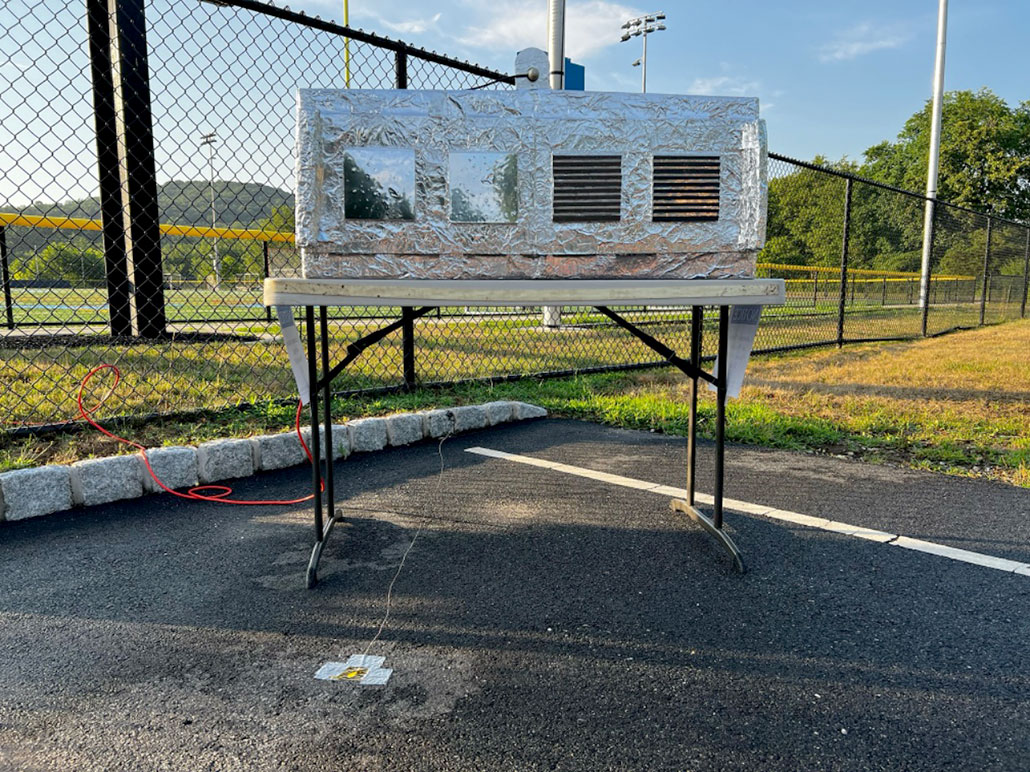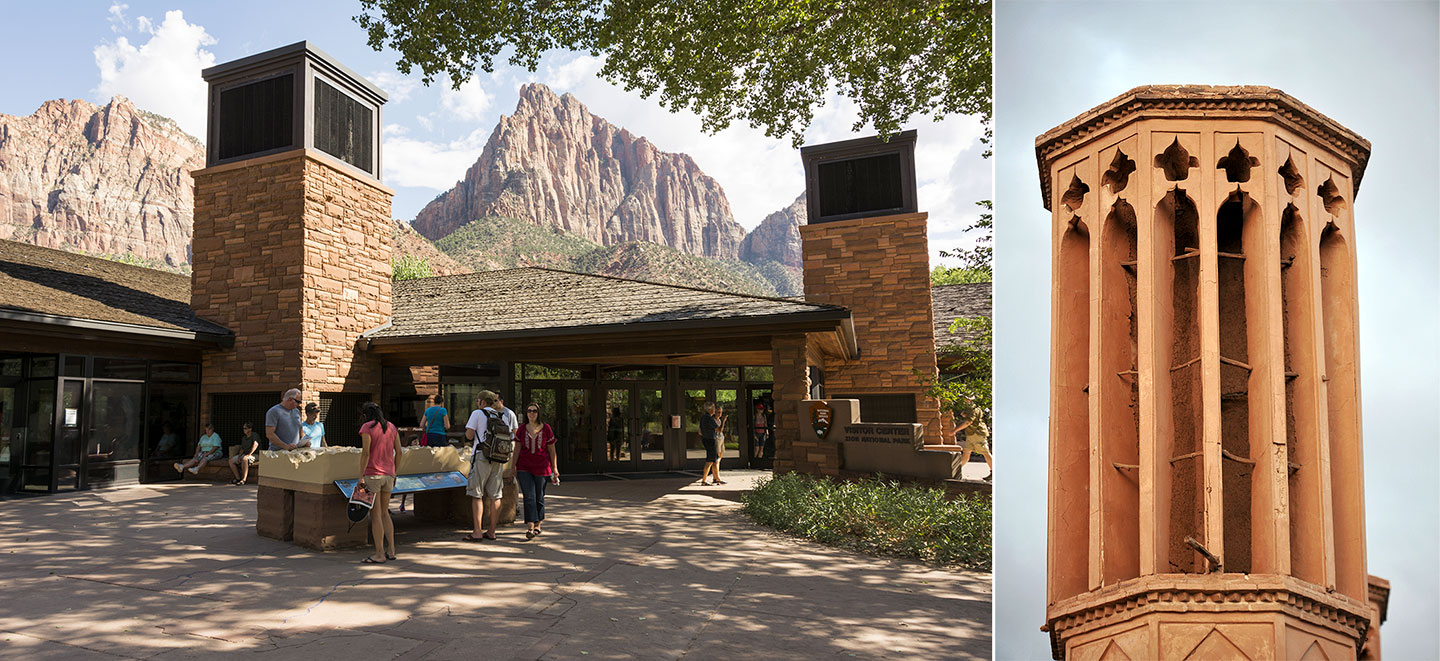To stay cool, some future homes may build on past power-free tech
Clever roofing, walls and vents cool by moving heat and air — without electricity

Before air conditioners existed, architects used passive cooling for homes in hot and dry regions. Even large structures stayed cool, like this Taos Pueblo built by Native American architects in the 14th century. New studies have updated this technology for cooling in hot and dry climates today.
ShaniMiller/E+/Getty Images Plus
This is another in our series of stories identifying new technologies and actions that can slow climate change, reduce its impacts or help communities cope with a rapidly changing world.
Today, many people regularly live with dangerous summer heat. To stay cool, most rely on air-conditioned buildings. But this A/C is an energy hog. And the electricity that powers it not only spews climate-warming gases but also raises energy bills. In tackling this challenge, two research teams have looked to the past. They’re combining some classic cooling concepts with new ideas. Their designs suggest how coming generations might build homes that deal with heat without being too costly.
One of these groups is at Columbia University in New York City. This team has designed walls that aren’t flat but zigzagged. They can be attached to the outside of regular walls. The new siding looks a bit like those accordion-pleated shades for windows. One half of each pleat faces up; the other half points down.
On outer walls, each half of the pleats would be covered with a different coating. They work together to help keep the building’s interior cool.
A very different project, tested in California, builds with conventional straight walls. But they’re made from some especially thick and dense material. It might be brick, stone or adobe. Vents and other openings in the building’s structure allow air to flow through it naturally. The flowing air evenly mixes warm, buoyant air with dense, cooler air. This natural ventilation draws in plenty of outdoor air to keep indoor rooms from getting stale.
Both designs keep their cool passively. That means they rely on no moving parts, explains Eric Teitelbaum. They also use no electricity or other form of power. Teitelbaum, a thermal engineer at AIL Research in Hopewell, N.J., did not take part in either project. But he works on “green” alternatives to air conditioning, so he’s familiar with the idea of passive cooling.

Reshaping walls, zigzags and all
Compared to flat walls, accordion-pleated siding reflects ground heat better, notes Qilong Cheng, who led the Columbia project.
In summer, he notes, the ground often is much hotter than the air. For instance, where the ground might be about 60º Celsius (140º Fahrenheit), a building’s walls might only be about 30 ºC (86 ºF). Straight walls might reflect some solar energy up to the sky, Cheng says. But at the same time, they could be picking up heat from the ground, explains this mechanical engineer (who’s recently moved to Purdue University in West Lafayette, Ind.).
To test this accordion-pleated siding, the Columbia group taped a zigzag-shaped aluminum frame to a thin, flat plastic wall. A clear, stretchy silicone polymer coated the upward-facing side of each pleat. The researchers glued a thin, highly reflective sheet of Mylar, a plastic film, onto the downward-facing side of each pleat.
Then they tested this model outdoors. They also included a model of a flat wall made from materials that emit heat well. Both models were left outside in New Jersey for 24 hours on a warm August day.

The temperature of the pleated-wall siding varied across the day. But on average, it was cooler than the flat wall by 2.3 ºC (4.1 ºF). At its best, it was 3.1 ºC (5.6 ºF) cooler than the flat wall. A cooler wall means less heat was transferred through the wall to warm the interior. The team used a computer model to calculate that the indoor temps would likely be 2.3 ºC (4.1 ºF) cooler.
That may not sound like much. In fact, though, this is “a significant improvement,” notes Xiaojie Liu. She’s a mechanical engineer at Purdue University. “In passive cooling for buildings,” she notes, “even a few degrees of indoor-temperature reduction can improve comfort.”
It also can save energy.
In those initial tests, the accordion-pleated siding had a cooling power of 30 to 67 watts per square meter (10.8 square feet) of exterior surface. This could reduce the need for any extra cooling.
Cheng’s group shared details of its findings September 17 in Nexus.

A lesson from older times
Rather than walls, the second design focuses on roofs and how air flows indoors. Its passive radiative cooling draws from ancient designs used throughout many hot, dry parts of the world (think the Middle East or the U.S. Southwest).
Long before there were air conditioners, ancient builders tinted or painted roofs and walls light colors to reflect the sun’s warming rays back into space. These old homes also had thick, dense walls. The walls would absorb indoor heat by day and release it to the outdoors, slowly, at night. That slow release kept indoor air from getting too cold.
The team drew from these classic ideas. Then it added a few modern innovations, explains Salmaan Craig. This building scientist at the University of California, Los Angeles, led the project.
For one, his group topped its structure’s roof with a high-tech cover. It reflects the sun’s warming rays while also emitting thermal energy that had been stored in the building. Then they designed strategically placed vents to allow air to move in and out. This set up a controlled mixing of warm and cool air.
Promising results
To test how well this design might keep interior spaces cool, Craig’s team built a pair of small model “homes.” One included all the new features. The other modeled features and materials found in most of today’s homes (although with no A/C).
Then they placed four water bottles inside each model. Water absorbs and releases heat well. So these bottles acted as the thermal mass for the structures. Like the thick walls of ancient buildings, this mass absorbs indoor heat. Each model was then left for two days at a sunny desert site in Topanga, Calif. Sensors measured indoor heat and air flow in and out of each “home.”
The new design stayed, on average, 1.6 ºC (2.9 ºF) cooler inside than the outside air. In contrast, the standard design was 4.3 ºC (7.7 ºF) warmer, on average, than the air outside.
These results were good, but indoor temperatures kept going up and down, like a roller coaster. They varied by up to 6.8 ºC (12 ºF) over the day.
To fix that, the team added two more water bottles to each home. This greater thermal mass helped indoor temps remain more stable. And the test home now drew in twice as much fresh air and expelled twice as much stale air as before.
The average indoor temp was now 3.9 ºC (7.0 ºF) cooler than outside. It was 8.9 ºC (16 ºF) cooler than air in the standard-home model!
Craig’s team shared its findings last year in Cell Reports Physical Sciences.
Do you have a science question? We can help!
Submit your question here, and we might answer it an upcoming issue of Science News Explores
Cautious enthusiasm for the new findings
Both the Columbia and California designs “show real promise,” says Liu at Purdue.
And the latter one should be easier to maintain than a home with A/C, adds Purdue mechanical engineer Yun Zhang. She says “should” because a move-in-ready model doesn’t exist yet. A “test home” does — but it’s only the size of a carry-on suitcase.
Zhang would also like to see studies to learn how dwellers might like them. Until someone tries to live in a full-size structure, she explains, “I don’t know if it’s comfortable.”
The Columbia team developed a new “all-season” design to make its house more effective and comfortable year-round. The angles of pleats on its zigzag siding can be varied, depending on the season. They could be adjusted to maximize cooling in summer and warming in winter.
Cheng’s group described this innovation in the May 15 Cell Reports Physical Science. Similarly, Craig’s team is working on a roof with adjustable thermal mass.
These designs won’t work equally well everywhere. For instance, note Zhang and Teitelbaum, neither is well suited for wet, humid areas, such as Atlanta, Ga. The designs work best in places that are both hot and dry. Think Phoenix, Ariz., or Riyadh, Saudi Arabia.
Craig acknowledges these limitations. The findings, he says, should be seen as part of “a spectrum of solutions. What’s worrying is [where] air conditioning is pushed as the only solution.”
This is one in a series presenting news on technology and innovation, made possible with generous support from the Lemelson Foundation.







